
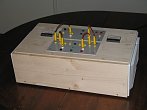

Suggestions for materials for a physics home lab
Compared to setting up a chemistry home lab, setting up a nice home lab for physics experiments is much more difficult. The science of physics is very broad and it strongly depends on what you want, what you should purchase.
Physics, more than any other science, is strongly biased to having equipment. Equipment can be as simple as a few magnets to something as complex as a setup for subatomic particle experiments. The available financial resources severely limit what can be setup at home.
A few things, however, are suitable for home experimenting and can already prove to be very interesting and equipment can be setup at reasonable cost.
- electronics, both analog and digital
- high voltage electrical experimenting
- magnetism
- mechanics
A few things, which really are worth the money are the following:
- A simple multimeter, capable of measuring voltages and currents. It is nice if it also can measure resistance. Simple, yet quite accurate multimeters are available for $20, or even less. I purchased a Velleman DVM850bl for just €15 and it works very well:
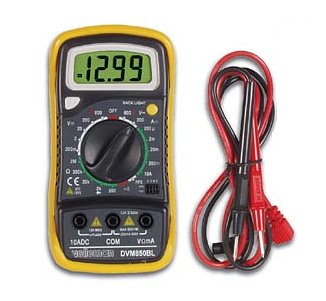
- A power supply, capable of producing an adjustable voltage from 5 to 30 volts. A symmetric power supply with positive and negative power rails is a very important piece of equipment for the electronics hobbyist. For more general physics hobbyists, a simple power supply with a single power rail is sufficient. At low budget, one even can buy a simple fixed voltage power supply, such as the PS1310, which provides a maximum of 10 A at 13.8 V. One should not bother of building such a device himself, it simply is not worth the effort and cost. I purchased a simple PS1310 for €45, and I modified it slightly to reduce ripple voltage (out of the box that is 200 mV at 10 A, by adding a big capacitor inside, I reduced this to less than 100 mV).
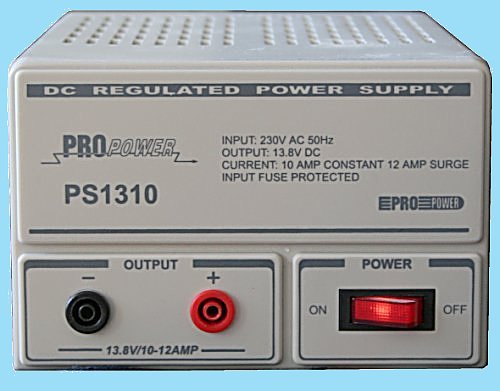
- When you do electronics, then it is best to have good stock of some common components. Buying them in bulk from an eBay seller makes a single fairly large investment, but the components are MUCH cheaper, than when purchased at a local supplier. I added standard carbon film resistors from the E12 series to my lab, starting at 10 Ω, and ending at 1 MΩ. I also added diodes of the type 1N4007 (general purpose, 1 A maximum current and 1000 V reverse breakdown voltage), I added a handful of capacitors, ranging from a few hundreds of pF to approximately 1 μF. Finally, I added a bunch of simple general purpose transistors, type BC547C and BC557C, and a few general purpose JFET input opamps, TL081. This was a one-time investment of almost $100, but when these components had to be purchased locally, I would have spent more than 3 times as much. Look at eBay for sellers of electronic components. There are quite a few and they have good prices, provided you buy in larger quantities.
- Any physics lab should have plenty of test leads, preferably with banana connectors, and also some connectors with crocodile clamps.
- If you do high voltage experiments, then you need some high voltage source. I have built two power supplies, a little one for medium voltages, up to approximately 300 V, and a large one for voltages up to 10000 V. I also have a HV-unit from an old oscilloscope, capable of delivering a voltage of over 15000 V, but only at very low current (a few hundreds of μA). Such HV-sources can sometimes be purchased as surplus part on eBay for a low price.
- Very interesting experiments can be done with gas discharge tubes of all kinds. It definitely is worth the money to invest in a few of them. Cheapest are the simple NE-2 bulbs, which can be purchased at eBay for less than $10 for 50 of them, interesting tubes also are in fluorescent lamp starters, which can be purchased at hardware stores. These can be either neon (orange discharge) or argon (purple discharge) tubes. Finally, xenon flash tubes also are quite interesting. These can be purchased at electronics parts stores for approximately $5 per item.
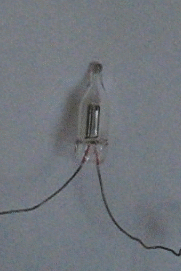
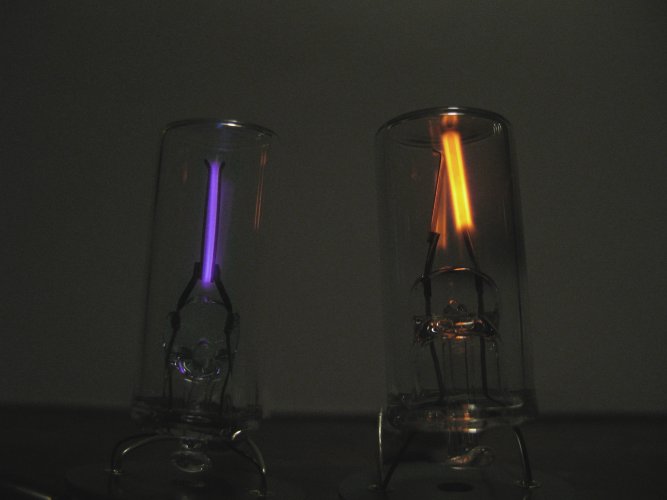
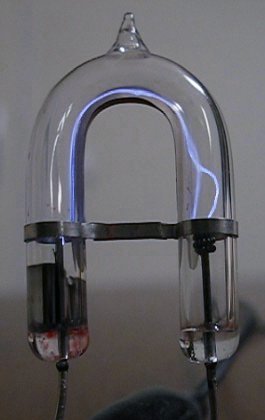
|
|
If you perform experiments with gas discharges, then you definitely need a power supply, such as the small one for a few 100's of volts, as described above. Also, a trigger transformer for a xenon tube can come in handy, if you don't want to handle really high voltages of several kV. |
|
|
Experiments with gas discharge tubes can be of all kinds. Oscillators can be built with them, they are interesting in light and radiation sensor experiments, and they are interesting in all kinds of sparking and plasma experiments. |
|
|
Finally, a very interesting type of discharge tubes are so-called spectrum tubes. These are filled with a gas of known purity and are designed, such that they show the spectrum of the light of the discharge very well. These tubes are available from specialized suppliers (search for gas spectrum tube). Here follow some pictures of these tubes. These tubes, however, are quite expensive, their price ranges from $20 to $40 per tube. Browse around on the Internet carefully, prices for similar tubes vary widely from supplier to supplier. If you want to experiment with gas spectrum tubes, then you need a current-limited power supply, capable of producing a few kV at least. |
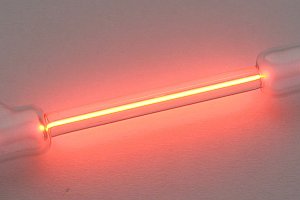
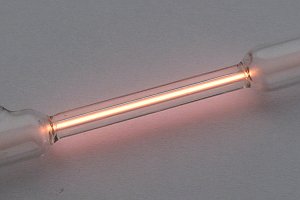
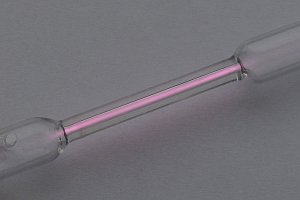
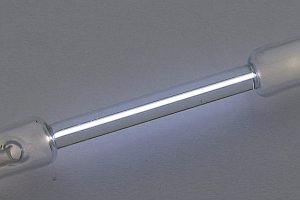
- Neodymium iron boron magnets also are interesting to add to the physics lab. These are very powerful magnets and can be purchased in many sizes, ranging from a few mm to several cm. It is best to purchase a pack of different size magnets in one go. Do not buy the really large ones of more than a few cm. These are very strong and pose a serious risk of punching fingers or injuring in another way. The little sticks of a few mm diameter and a length of 1 cm or slightly more are the most interesting. These magnets are interesting in conjunction with gas discharge experiments, in conjunction with low voltage current experiments, and also on their own. These magnets are available on eBay from many different sources. With some patience, you can sometimes find really good auctions. I purchased the following set for only €10.50 (appr. $13), but you have to have some luck for this and to check out regularly. When these magnets are purchased separately, then you pay at least 5 times as much.
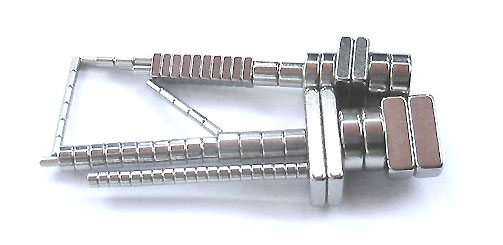
- Also a must in a physics lab are some bigger capacitors. These can be used to show many interesting effects, especially in combination with magnets, or with gas discharges. I was given a few low voltage electrolytic capacitors of 10000 μF / 30 V. I purchased a lot of 50 capacitors of 220 μF / 400 V from eBay, and I purchased several high voltage capacitors (4700 pF / 6300 V, 2200 pF / 15000 V) and a few huge capacitors (40 μF / 5000 V). The really high voltage capacitors (more than a few hundreds of volts) only are needed for some specialized high voltage experiments, such as building Marx generators, Cockcroft Walton voltage multipliers, and discharge experiments. But at least, having around a few larger low voltage to medium voltage capacitors adds a lot to the lab, even if you do not do real electronics. The pictures below show a high voltage pulse discharge capacitor (40 μF/5000 V). These pictures nicely show how large these capacitors are. They are Russian army make and are VERY robust. They also easily withstand 7500 V.
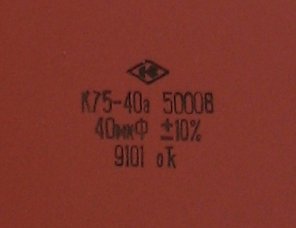
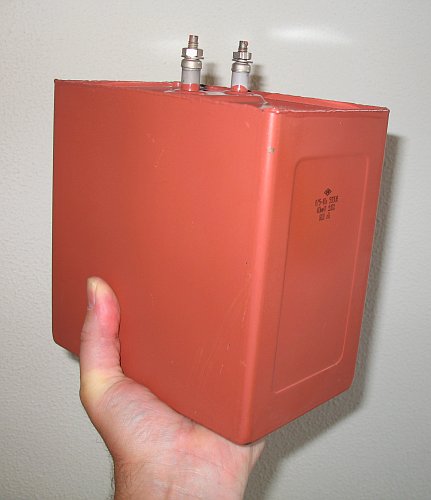
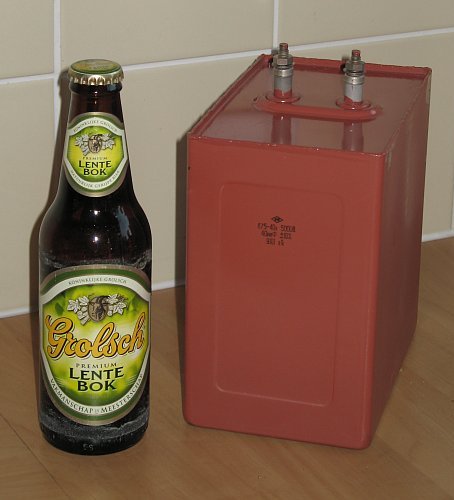
- If you are doing high voltage experiments, then you also need some high voltage resistors. These are needed for measuring, but also can be useful for building high voltage circuits. Such high voltage resistors must have very high resistance, and they also must withstand many kV. These resistors are extremely expensive and hard to get your hands on. However, from ordinary resistors, one can build such high voltage resistors. I made two 500 MΩ resistors from 22 MΩ resistors and 10 MΩ resistors, by soldering long strings of ordinary resistors. The pictures below show how these are made. After such strings of resistors were soldered, they were covered by a thick layer of transparent lacquer and mounted in nice plastic boxes with strong terminals. The lacquer is important to reduce corona losses in the resistor. Each of these resistors can withstand appr. 20 kV. These resistors also are used as a 1 : 1000 probe with the multimeter, mentioned above. The total resistance of both resistors is 1 GΩ, and the input resistance of the multimeter is 1 MΩ. By using these in series with the multimeter, these resistors allow the measurements of voltages to a few tens of kV with high accuracy.
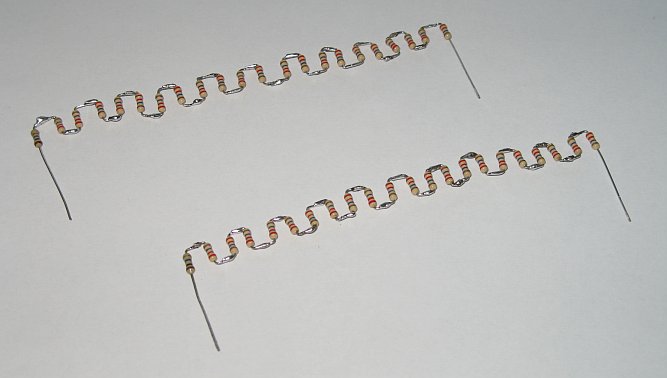
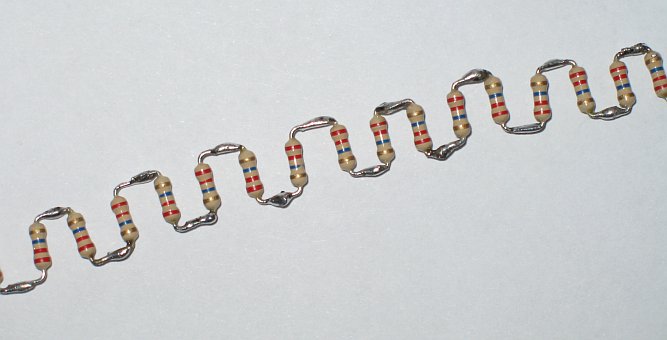
- General material like strips of metal (zinc, copper, aluminium), transparent glass beakers, incandescent tungsten bulbs for several voltages, LED's, small mirrors, lenses, etc. always come in handy with many experiments. Don't spend too much cash on these, but look around carefully. Many people have stuff lying around, which can be really useful in your science lab, while they intend to throw it away (e.g. waste metal strips from a building project, parts from a broken mirror, parts from an old camera or flash unit).
With the materials, mentioned above, one can do quite a few interesting and fun experiments. Sometimes, even plain household items can do quite interesting experiments. On this site, many interesting experiments will be described, some of them using more specialized materials, others can be done with very simple equipment and show unexpected possibilities of well-known and common materials.
back to main miscellaneous page